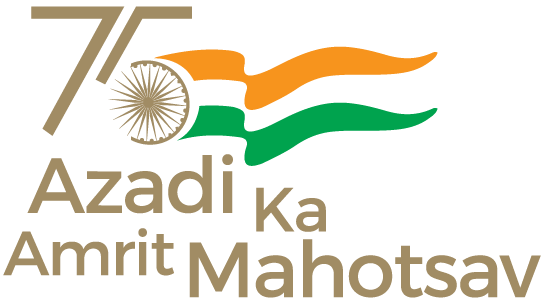1. BACKGROUND
A)History of Creation of the District:
In the State of Mizoram, there used to be only three administrative districts after Mizoram attained statehood in 1986:
Aizawl District
Lunglei District
Chhimtuipui District
However, as the population of Aizawl district is almost half of the entire population of the State, first the Department of Health & Family Welfare , Government of Mizoram devide Aizawl district into two Chief Medical Officers’ jurisdictions: the Aizawl East District and the Aizawl West District. Aizawl itself was also divided among these two CMOs, though administratively it continues to remain one district.
During the later part of the 1990s, the Government of Mizoram decided to have eight administrative districts for the State instead of three. Hence new districts are established from the existing three districts. The new districts are:
- Aizawl District
- Kolasib District
- Champhai District
- Serchhip District
- Mamit District
New districts created from Chhimtuipui District
- Saiha District
- Lawngtlai District
Lunglei District remains unchanged.
In the new Aizawl District as even the city of Aizawl was under two Chief Medical Officers, the department of Health & Family Welfare and the Government of Mizoram decided that the district may still be under two CMOs for better implementation and monitoring of healthcare service deliveries.
The Aizawl West District Headquarters is located in the southern site of the Aizawl City, and the Aizawl West District is bounded by :
North : Aizawl East and Kolasib District of Mizoram
West : Mamit District of Mizoram
South : Serchhip District of Mizoram
East : Aizawl East District of Mizoram
In the city of Aizawl, the Western part and the Southern part of the city is under the jurisdiction of the Aizawl West Chief Medical Officer.
The district consists of 1986.9 Sq. Km, and the total population is 192082 (Source: Mid year population,2023,). Two-third of the population is in the Aizawl Area and the State Capital is in this district. The Major Religion is Christianity. There are also few practitioners of other religions like Hinduism, Muslim, Sikh, Buddhism and Jainism. Languages spoken are Mizo and English, with some Hindi and some Nepalese also being spoken.
There has been major change in the population size and the healthcare service delivery system of the District as 50% of the urban population attached to Aizawl West during 2005-06 has been shifted to the healthcare delivery system of Aizawl East district in 2006-07.
B) Administrative Profile:
The District administration is looked after by The Deputy Commissioner, He is responsible for maintaining Law & Order, revenue, civil supplies etc. Under the DCs direction the District is divided into three rural development blocks:
- Tlangnuam block
- Reiek block and
- Aibawk block.
These Blocks are headed by the Block Development Officers (BDOs). Further down the District is again divided into 73 Village Councils, which are the Mizo counterpart of the Panchayati Raj system in some other states of the country. Village Councils consist of representatives elected directly by the people of particular villages, where the Village Council President is the Overall in-charge of his area under the supervision of the Block Development Officer.
The table below captures the administrative profile of the district in further details:
Administrative Profile
Administrative levels | Description/Number |
Assembly constituencies (no.) | 5 |
Number of Blocks (RD Blocks) | 3 |
Number of Village Council | 73 |
Number of villages | 76 |
C) Geography and Climate :
Aizawl West District is situated 1132 mtrs. Above sea level and is a hilly terrain with long duration of rainy season starting from March to September. There are two big rivers, namely, Tlawng River in the west and Tuirial River in the east. The main crops of the district are fruits like banana, pineapple and passion fruit. The district is also rich in flowers like a variety of roses and orchids, as well as anthuriums. Though the rainy season is long, the district enjoys temperate climate throughout the year with average temperature remaining at 26 degrees Celsius.
One of the major problems of Aizawl West district is that it lies in the earthquake prone area and also suffers from other natural disasters like hailstorm, cyclone and landslide.
Though road connectivity is good, but during rainy season it is more or less inaccessible. The Public Transport system in the area as a whole is very poor, except in two PHC areas i.e Sairang PHC and Lengpui PHC.
D) Demographic profile
The table below captures the demographic profile of the District, along with some of the important Human Development indicators:
Indicators | District | State |
Population |
|
|
Population Density |
|
|
Urban |
|
|
Rural | 22.3 % | 50.4 % |
Scheduled Castes | 1385(1%) | 1251 |
Indicators | District | State |
Children (0-5 years) | 12893 |
|
Children (below1 year) | 3006 |
|
Total no. of eligible couple (15-45 years) eligible couple | 16464 |
|
Vital Statistics |
|
|
Crude Birth Rate | 14.9 |
|
Crude Death Rate | NA |
|
IMR | 18.5 |
|
No of Maternal Death | 1 |
|
Sex Ratio |
|
|
Overall | 956 | 935/1000 |
Child | 972 | 964/1000 |
Literacy |
|
|
Literacy among Males | 97.2% | 90.7% |
Literacy among Females | 96.06% | 86.7% |
Total | 96.6% | 88.8% |

















